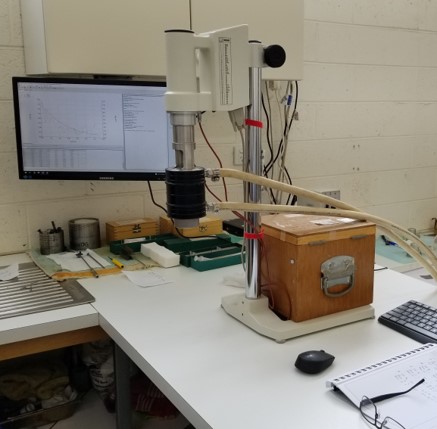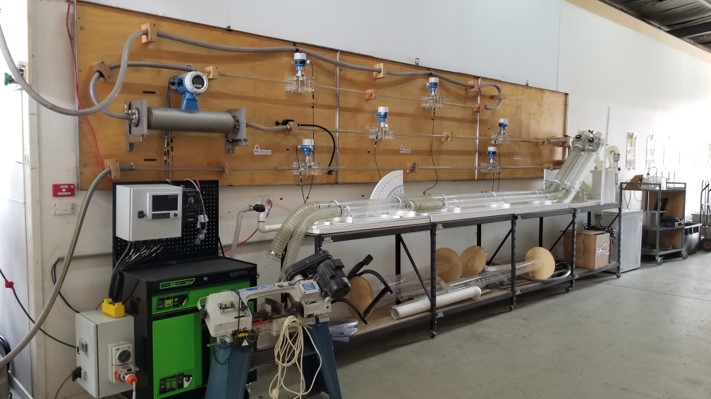Menu
Melbourne Laboratory

Our pipe-loop test arrangement consists of three different size pipes (each 6m in length). The pipe-loop is fitted with six pressure transducers to record the pressure drop along the pipes. Flow and density measurement of slurry is obtained by a Coriolis meter. The head loss data from the pipe-loop testing is used to determine the rheology of the slurry.
Results from a standard rotary rheometer are interpreted to provide additional data to further assist in slurry transport system design and understanding the behaviour of deposited tailings and the developing beach within the TSF. The typical findings expected from the rheological and pipe-loop investigations are as follows:
Our pipeline blockage apparatus is designed to measure the settling behaviour of slurries in inclined pipelines with different angles and during the shutdown of slurry pipelines. The pipe blockage and re-start test estimate the duration a slurry pipeline can be left full of tailings without flushing and if the pumping system can provide the required pressure to flush and unblock the pipes after prolonged shutdowns.
The utilisation of the pipe-loop facility and rotational viscometer has assisted our engineers in better understanding the behaviour of tailings slurry in transport by pump and pipeline or open channel system. It has provided valuable information for tailings deposition in the TSF and beach development. The pipeline blockage test provides input parameters for designing a robust and hassle-free tailings transport system. The laboratory test results are factored into our designs to facilitate the best possible outcomes.
As global specialists in mine tailings management, finding optimum design in tailings transport and storage facilities is vital. ATC Williams has a proud tradition of engineering innovation and is constantly developing new test procedures to meet the ever-growing demands of the mining industry. Therefore the company has developed extensive rheology and pipe-loop testing for slurry transport and predicting tailings behaviours.
Rheo: “The branch of physics that deals with the deformation and flow of matter, especially the non-Newtonian flow of liquids and the plastic flow of solids.”
Logy: “Denoting a subject of study or interest.”
Hydraulic transportation of wet tailings (slurry) from the processing plant to Tailings Storage Facilities (TSF) is currently the most common type of material handling undertaken at mine sites worldwide. The robustness and reliability of such systems require extensive materials testing to better understand the system requirements, equipment selection and the performance and operation of the system.


Click below to login to our ITransfer Portal.
For more information, please read our Privacy Statement